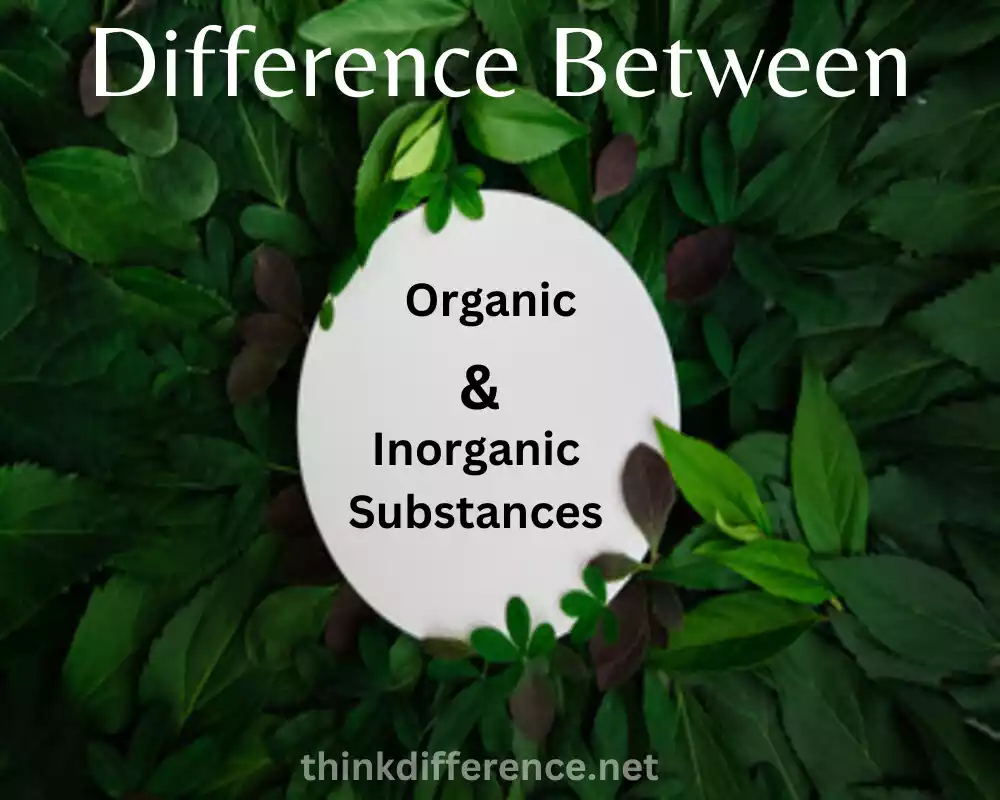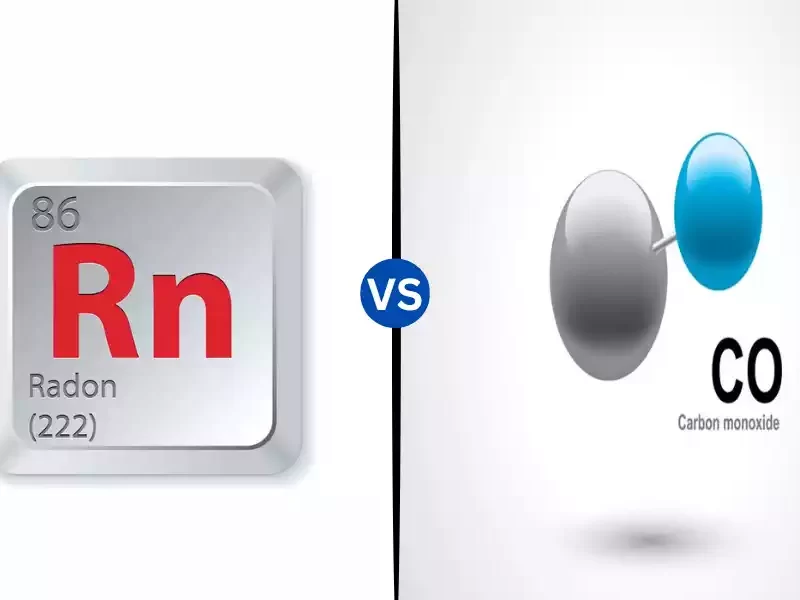Organic compounds are mainly composed of carbon atoms. They also contain oxygen, hydrogen sulfur, nitrogen, and other nonmetals. They are characterized by covalent bonds. They are abundant in living organisms and form important biomolecules, such as proteins carbohydrates, lipids, and nucleic acids.
Organics are usually flammable with lower boiling and melting points. They are typically dissolved within organic solvents. They play a crucial role in the storage of energy as well as structural support and genetic information transfer cells’ membranes, and genetic information transfer.
Inorganic substances include compounds that lack an initial carbon-hydrogen (C-H) bond, such as nonmetals, metals, and metalloids. They have a variety of bonding properties like ionic and metallic bonds. They can be present in living and non-living substances.
Inorganics typically have more melting points, are not flammable, and are some of the best conductors. Their main functions are catalysis, structural support, and electrical conductivity. They play important roles in many disciplines, including chemistry biology, as well as materials science.
Definition of Organic Substance
Organic substances comprise a set of chemicals primarily made from carbon, as well as other elements such as hydrogen, nitrogen, oxygen, and sulfur. They are the fundamental components of living organisms such as animals and plants.
These substances are distinctive because they have hydrogen and carbon atoms that are connected to form”C-H bond. Scientists research these chemicals to better understand the way they work and create useful products. In simple terms, organic compounds are essential chemicals derived mostly from carbon. They are found in living organisms and used in numerous products.
Definition of Inorganic Substances
Inorganic substances are those that do not have a great deal of carbon-hydrogen (C-H) bonds. They are composed of a myriad of elements such as metals, nonmetals, and other substances. They can be found all over both in living things and in non-living things.
They generally contain high boiling and melting points and aren’t able to ignite quickly. Certain inorganic substances, such as metals, are extremely efficient in transferring heat and electricity. We find them in minerals or rocks, as well as in metals used for building or making things.
Inorganic Chemistry involves the research of such materials, which helps us to understand how they function and how they could be beneficial in a variety of fields, such as industry, science, and everyday life.
Difference Between Organic and Inorganic Substances
Here’s a simplified comparison chart between organic and inorganic substances:
| Aspect | Organic Substances | Inorganic Substances |
|---|---|---|
| Composition | Carbon-based, often with H, O, N, etc. | Wide range of elements including metals, nonmetals, etc. |
| Bonding Type | Covalent (typically C-H bonds) | Diverse bonding types (ionic, metallic, covalent, etc.) |
| Occurrence in Nature | Found in living organisms | Found in living and non-living matter |
| Flammability | Often flammable | Typically non-flammable |
| Melting and Boiling Points | Lower melting and boiling points | Higher melting and boiling points |
| Solubility | Often soluble in organic solvents | Variable solubility properties |
| Examples | Proteins, carbohydrates, lipids, DNA | Minerals, metals, salts, water |
| Functions | Energy storage, biological functions | Structural support, industrial uses |
Applications of Organic and Inorganic Substances
Organic compounds are vital in agriculture, pharmaceuticals, as well as in the chemical industry to produce fertilizers, medicines, and synthetic materials such as plastics. Inorganic substances, like minerals and metals, have numerous applications in construction as electrical components, as well as catalysts for chemical reactions.
They are essential for the creation of robust structures, wiring as well as industrial processes. In addition, inorganic materials aid in environmental remediation as well as water purification.
Both organic and inorganic materials have a vital role to play in a variety of industries, increasing the quality of our lives and facilitating technological advances. Their applications are constantly evolving through ongoing research and development.
Organic and Inorganic Substances in Daily Life
Organic Substances:
- Food: Organic compounds like carbohydrates protein, fats, and proteins constitute the basis of our diet. They provide vital nutrients and energy. Vegetables, fruits, and meats as well as grains are abundant in organic matter.
- Medical: Pharmaceuticals are organic substances that are designed to treat illness and keep healthy. From antibiotics to painkillers, these drugs are crucial to medical treatment.
- Personal Care: Natural ingredients used in soaps, shampoos, cosmetics, and lotions can enhance your grooming routines. The natural oil, extracts from plants as well as organic compounds are frequently employed.
- Textiles: Organic fibers, such as wool and cotton are the most commonly used organic materials in textiles and clothing. Synthetic organic polymers like nylon and polyester, are also popular.
Environmental Impacts and Considerations
Organic Substances:
- Biodegradability: Some organic materials are biodegradable which means they are degraded by natural processes. This could reduce their impact on the environment of these substances when they are removed correctly. Some organic materials can be biodegradable, and certain substances may remain in the soil for a long time.
- Pesticides and fertilizers: In the agricultural sector of organic farming, the use of natural pesticides as well as fertilizers could be less harmful to ecosystems when compared to synthetic chemicals. Organic farming practices are designed to limit the contamination of water and soil.
- Pharmacies: The environment can be contaminated with pharmaceuticals via the discharge of wastewater and can cause unintended harm to wildlife and aquatic ecosystems. The proper disposal and treatment of wastewater are essential for minimizing the negative effects.
Inorganic Substances:
- Heavy Metals: Inorganic compounds such as metallic heavy elements (e.g. mercury, lead, and cadmium, etc.) are highly harmful to the ecosystem. Their infiltration into ecosystems can cause soil and water pollution that harms terrestrial and aquatic life.
- Mining and extraction: Extracting metals and inorganic minerals typically involves disruption of habitats as well as deforestation and the release of polluting substances into the environment. Sustainable mining practices seek to reduce the negative effects.
- Electronic waste: The inorganic elements found within electronic gadgets could cause environmental problems if they are not properly disposed of. Recycling and responsible management of e-waste are vital to avoid the contamination of water and soil.
- Industrial Pollution: Chemicals that are inorganic and used in industrial processes may contribute to water and air pollution. Regulations and technology have been put in place to limit emissions and to control pollution from industrial processes.
It is crucial to understand the distinction of Organic and Inorganic compounds
Understanding the difference between organic and organic substances is crucial in a variety of fields, including biology and chemistry in medicine, agriculture, and environmental science.
Here are the reasons why it is crucial:
- Physical and Chemical properties: Scientists use chemical and physical properties of organic and inorganic substances to understand their behavior. With these distinctions, they can determine what materials will perform the best under specific pressure conditions or temperature ranges, or with different chemical reactions. This knowledge is the foundation for developing new materials, creating chemicals, as well as ensuring the safety of storage and handling.
- Biological Relevance: Organic chemicals are vital to life processes in organisms. They serve as structural elements, and energy sources, and also participating to participate in the metabolic process. Inorganic compounds, on the contrary, play vital functions as electrolytes, enzyme cofactors, as well as controllers of biological functions. Understanding the distinction helps understand the biochemical roles and the functions of different substances, which can lead to advances in nutrition, medicine, and biochemistry.
- Environmental impact: Separating organic from inorganic substances is essential to evaluate their environmental impact. Organic compounds can be biodegradable or persistent pollutants that affect ecosystems as well as our health. Metals that are inorganic, and heavy, are harmful contaminants that have long-lasting consequences. Knowing their behavior in the environment can help in developing strategies to prevent pollution as well as remediation and sustainable methods.
- Agriculture and Food Science: Organic and inorganic substances can have an impact on food production and agriculture. Organic farming is a sustainable method of agriculture that is heavily based on natural ingredients to make fertilizers and pesticides, as well as organic ingredients to enhance agriculture practices. Inorganic chemicals and synthetic fertilizers are employed to increase crop yield and correct deficiencies in nutrients. Knowing their effects on the soil, plants, and ecosystems aids in making educated decisions about agricultural practices and food safety.
- Industrial applications: Differentiating between organic and inorganic substances is essential for industrial use. Organic substances are used as raw materials for the manufacturing of plastics, pharmaceuticals, and dyes. Inorganic chemicals are utilized in metallurgy, construction, electronic equipment, and energy production. Knowing their characteristics and how they interact permits to development of efficient procedures, quality controls, and innovation in the industries.
- Scientists Research: An understanding and appreciation of the distinction of organic and non-organic substances is essential to research in science across disciplines. It facilitates accurate experiment design analysis of data, as well as efficient communication between researchers. This distinction assists researchers in choosing the most appropriate methodology such as analytical techniques and models for studying particular substances or processes.
Inorganic Substances:
- Construction: Materials made of inorganic substances like bricks, concrete, and steel form the foundational elements of our offices, homes bridges, roads, and roads. They offer structural strength and long-lasting durability.
- Transport: metals such as steel and aluminum, are used to construct of vehicles. Meanwhile, fossil fuels (inorganic hydrocarbons) are the power source for buses, cars, and aircrafts.
- Electronics: Materials that are inorganic like copper and silicon are the most important components of electronic devices, ranging from laptops and smartphones to TVs and appliances.
- Water Treatment: Chemicals that are inorganic like chlorine and ozone can be used to disinfect water supplies and eliminate contaminants, which ensures that water supplies are safe and free of contaminants.
- Home appliances: Everyday objects like ceramics, glassware, and pottery are constructed from inorganic materials. Aluminum and other metals are commonly used in cookware.
Future Developments and Trends
The trends and developments that are coming up that concern organic and inorganic substances are influenced by advances in technology sustainability, sustainability, and changing society’s needs.
Below are some possible emerging trends, developments, or future innovations that could be in those areas.
Organic Substances:
- Sustainable Materials It is becoming apparent that there’s an increasing emphasis on the development of environmentally sustainable and eco-friendly products that are derived from organic resources. Research on Bio-based plastics, biodegradable materials, and alternative sources of energy to fossil fuel-based items will additionally be discussed.
- Green Chemistry: The field of green chemistry is designed to develop eco-friendly products and processes. Future developments could include the creation of organic compounds that are less toxic, have improved biodegradability, and have less environmental impact throughout their life cycle.
- Bioengineering and Biotechnology: Biotechnology and bioengineering developments have great potential for sustainability in the production and use of organic substances like biofuels, pharmaceuticals, and other materials that are pharmaceutically active. This is a case of genes modified by organisms as well as synthetic biology methods.
- The future of Precision Medicine: The future of healthcare may include customized medicine methods that use organic substances that are adapted to the individual’s genetic makeup. This may require the development of targeted treatments and diagnostic tools that are based on organic substances. 0000
Inorganic Substances:
- Advanced Materials: Designing advanced materials inorganic that have improved properties such as greater strength, conductivity, and durability can be extremely rewarding. Examples include the development of nanomaterials, smart materials, and materials for energy storage.
- Green and Sustainable Technologies: The integration of inorganic materials into sustainable and green technologies is an increasing trend. Batteries, solar cells, and other renewable energy sources rely heavily on organic materials that have recently seen rapid progress.
- Environmental Remediation: Inorganic compounds remain essential elements of environmental remediation, playing crucial roles in the process of degrading and eliminating pollutants from soil, water, and air environments. Catalysts and adsorbents composed of organic matter have proven their worth time and time again in their effectiveness as removal agents of pollutants in these mediums.
- Intelligent Electronics: Organic substances are likely to play a key role in the development of electronics, like flexible and wearable electronic devices, quantum computing, and the most advanced sensors. Inorganic materials that possess unique electronic properties will facilitate the creation of smaller more efficient, and faster electronic devices.
- Resources Management: Responsible and long-term management of resources such as metals and minerals will be increasingly crucial. This will include efforts to reduce pollution, increase recycling technology, and find alternatives to the scarce and critical inorganic resources.
Ending
Organic compounds are primarily carbon-based are essential to life and are used in agriculture, medicine, and in industry. Inorganic substances cover a wide spectrum of compounds that are not solely made up of carbon, like minerals and metals. They are essential for electronics, construction as well as industrial uses.
Both kinds of substances play a significant role in our lives every day with organics being that are found in foods and pharmaceuticals and inorganics being essential for building infrastructure and electronic devices. Understanding the difference between these two types of substances is vital in areas like biology, chemistry, and material science.



